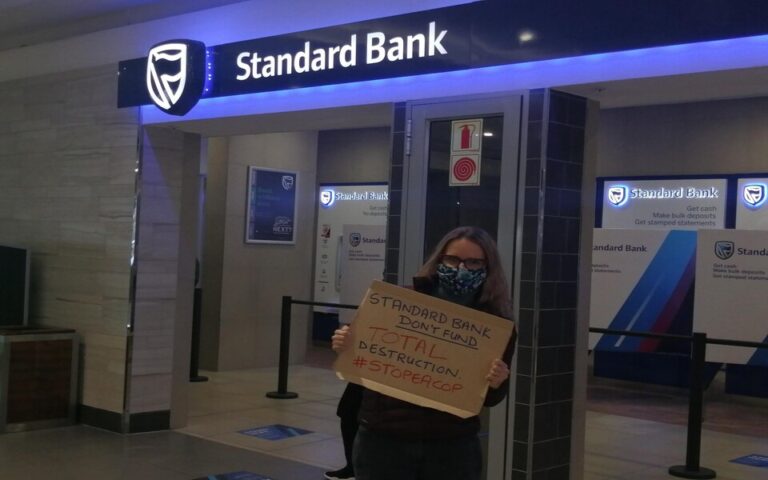In early November, Just Share published an analysis of Sasol’s 2023 climate change report. Based entirely on Sasol’s own disclosures, the analysis highlights the energy company’s clear expressions of doubt that it would meet its much-vaunted decarbonisation target, set only in 2021, to reduce emissions from its chemicals and energy businesses by 30% by 2030.
Sasol responded by “reiterating” its commitment to the target and calling the analysis “misdirected” and “misleading”.
But Sasol has a long history of setting and missing climate targets.
Two years ago, the company’s big shareholders, including those participating in the global Climate Action 100+ engagement initiative, congratulated themselves on a huge achievement when Sasol announced its “emission reduction roadmap”.
In 2021 and 2022, those shareholders voted overwhelmingly in favour of the company’s “say on climate” resolutions, despite several expressing misgivings about the roadmap’s feasibility. Their support seemed to be founded on the belief that environmental, social and corporate governance-driven investors had finally persuaded Sasol to take climate change seriously.
However, a review of Sasol’s reporting over the past 20 years shows that, on the contrary, the company has always known that its huge emissions pose serious risks, and that it has been running rings around shareholders on climate issues for decades.
Almost two decades ago, in 2004, Sasol reported that it was finalising “group-wide targets on GHG [greenhouse gas] emissions”. In 2005 the company reported that it was investigating carbon capture and storage initiatives, and in 2006 it referred for the first time to the risks to its business posed by carbon taxes. In 2008, Sasol stated that climate change “places a specific responsibility on us to pursue ways of reducing our impact on the environment”.
In 2009, Sasol said it had “developed a comprehensive climate change response strategy”, “adopted ambitious emission reduction targets” and “established a GHG management committee”. This was more than a decade before the adoption of the 2021 roadmap and the appointment of an “independent Climate Change Advisory Panel” in 2022.
The 2021 roadmap also commits Sasol to procuring, with French multinational company Air Liquide, 1,200MW of renewable energy by 2030. But 13 years earlier, in 2008, Sasol had already reported completing feasibility studies into “selected renewable energy projects”.
Set and missed
The fate of the company’s GHG targets for this era was to be endlessly restated, “rebaselined”, “closed out”, reviewed, and ultimately completely missed.
In 2005, Sasol set a GHG emission reduction target of at least a 10% reduction in emissions per ton of product (emissions intensity) off a 2005 baseline by 2015.
GHG intensity was reported as 2.88 in 2005 (this figure was “restated” to 3.12 in later reports). In 2009, the target was “expanded” to a 15% reduction (same baseline) by 2020. In 2014, Sasol clarified that its target was GHG intensity of 2.47 by 2020, but also stated that long-term company-wide intensity targets would be “closed out”.
In 2015 GHG intensity was reported as 3.35, and the 2.47 target by 2020 was repeated. But in 2020, GHG intensity was 3.91 – in other words, 58% higher than the target of 2.47, with no reference to the significant target exceedance.
In fact, no mention was made of the 2009 or 2014 targets in any disclosures from 2016 to 2020, though Sasol did note in 2019 that its emissions profile “does not lend itself to a GHG intensity-based production target but rather an absolute GHG target”.
In 2023, GHG intensity was 4.12, 15% higher than the now restated 2015 figure (3.58), and 32% higher than the restated 2005 figure.
What of the company’s progress on absolute GHG emissions in this period, given its long-standing recognition of the importance of significant reductions? In 2005, direct GHG emissions were 72.5Mt CO₂ equivalent. In 2023, they were 64.4Mt – a reduction of about 11%, or 0.6% a year, over 18 years.
But Sasol’s 2021 roadmap commits it to reducing emissions from its chemicals and energy businesses from 62.3Mt to 46.1Mt by 2030. This would effectively require a 3.7% annual reduction – more than six times faster than its progress since 2005. Instead, Sasol has already warned that emissions will increase in 2024.
Of course, the current management is not responsible for the company’s historical commitments or for missing previous targets. But this 20-year view demonstrates at least two things: that mistrust of Sasol’s claims about climate action is not only warranted but crucial; and that institutional investors have been astonishingly lax in holding management accountable for meeting targets. Will things be any different this time around?
This article was first published in the Financial Mail on 16 November 2023.
By: Tracey Davies
IMAGE: Bloomberg / Contributor






